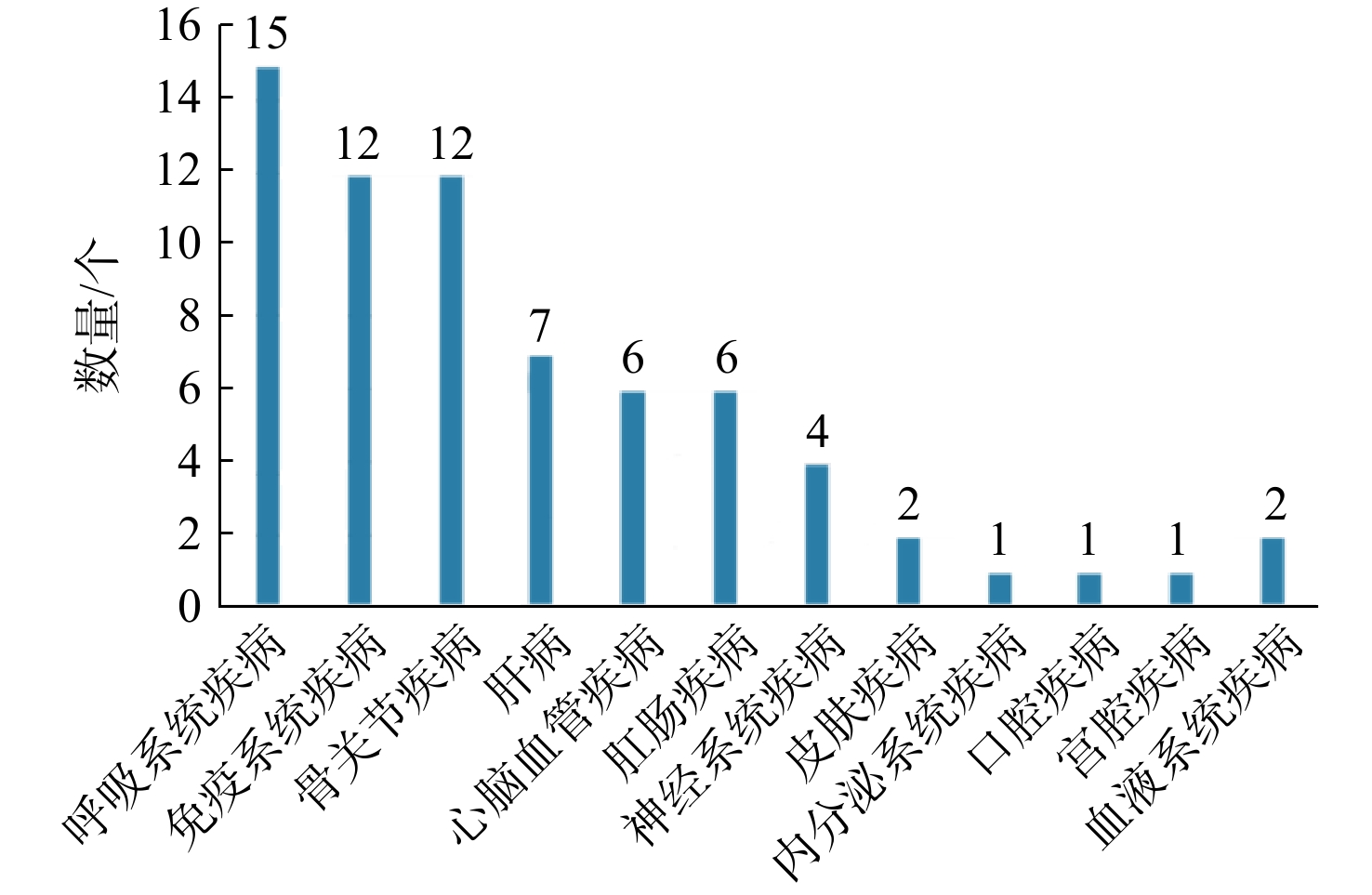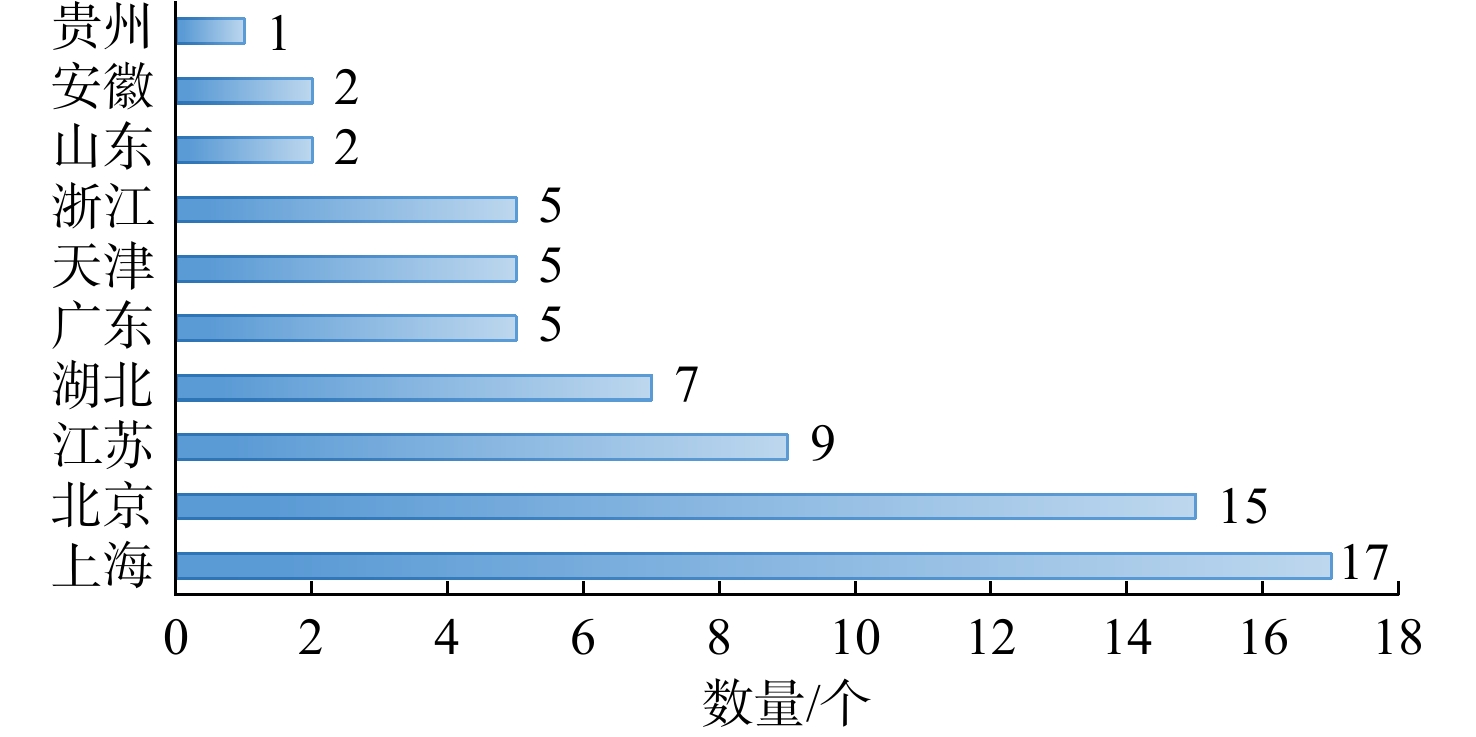Research progress and existing problems in the industrialization of stem cell drugs
-
摘要:
干细胞是一类具有多向分化潜能和自我更新能力的原始未分化细胞,有再生人体各种组织和器官的潜在功能。干细胞药物开发是生命科学的前沿研究领域。干细胞在不同重大疑难性疾病的治疗上开展了广泛的临床试验,在某些适应证上作为药物获得批准上市,有着广阔的产业化前景。本综述通过介绍干细胞药物在全球及国内产业化方面的进展,及产业化存在的主要问题,如干细胞药物的有效性、质量控制、安全性等,为干细胞药物的开发提供参考和思路,以加快干细胞药物的产业化进程。
Abstract:Stem cells, which are a type of primitive cells with multipotent differentiation potential and self-renewal ability, have the potential to regenerate various tissues and organs. Stem cell drug development is a frontier research field in life sciences. Extensive clinical trials involving stem cells have been conducted for different complicated diseases. Some stem cells have been approved as drugs for some indications, indicating their broad industrial prospects. This review introduces the progress of stem cell drugs around the world, especially in China, and discusses the main problems in the industrialization of stem cell drugs, such as their effectiveness, quality control and safety, so as to provide some reference and insight for the development and rapid industrialization of stem cell drugs.
-
Keywords:
- stem cell /
- industrialization /
- effectiveness /
- quality control
-
-
表 1 全球已上市干细胞产品
序号 获批国家/地区 获批时间 商品名 公 司 细胞来源 适应证 1 澳大利亚 2010 MPC Mesoblast 自体间质前体细胞产品 骨修复 2 韩国 2010 Queencell Anterogen 脂肪来源间充质干细胞 皮下组织缺损 3 韩国 2011 Cellgram Pharmicell 骨髓来源间充质干细胞 急性心肌梗死 4 加拿大 2012 Prochymal Osiris Therapeutics/Mesoblast 人异体骨髓来源间充质干细胞 移植物抗宿主病 5 韩国 2012 Cupistem Anterogen 脂肪来源间充质干细胞 克罗恩病并发肛瘘 6 韩国 2012 Cartistem Medipost 脐带血间充质干细胞 退行性关节炎 7 美国 2012 MultiStem Athersys 骨髓等来源的多能成体祖细胞 赫尔勒综合征 8 韩国 2014 Neuronata-R Corestem 骨髓来源间充质干细胞 肌萎缩侧索硬化 9 欧盟 2015 Holoclar Chiesi Farmaceutici 人类自体角膜干细胞 中重度角膜缘干细胞缺乏症 10 印度 2016 Stempeucel Stempeutics Research PVT 骨髓来源间充质干细胞 严重肢体缺血 11 日本 2016 Temcell JCR Pharmaceuticals 异体骨髓来源间充质干细胞 移植物抗宿主病 12 欧盟
日本2018
2021Alofisel TiGenix/Takeda 异体脂肪间充质干细胞 复杂性克罗恩病并发肛瘘 13 日本 2018 Stemirac Nipro 骨髓来源间充质干细胞 脊髓损伤 表 2 干细胞药物产业化存在的问题及解决方案
存在问题类别 存在问题内容 解决方案 干细胞药物的有效性 缺少生物有效性指标 进行转录组学、蛋白组学研究,筛选针对适应证的生物有效性指标 干细胞功能不强 通过基因修饰增加功能 临床适应证和入组标准不合适 对适应证进行细分;严格合理制定入组标准 干细胞药物的质量可控 干细胞的异质性 制定供者及组织筛选标准;确定合理的关键工艺参数(CPP)范围
建立PAT在线、动态分析过程干细胞的关键质量属性(CQA)
认识不足针对适应证开展机制和质量研究,充分了解和确认关键质量属性,
尤其是生物效力的质量属性干细胞药物的安全性 缺乏可靠的微生物检测快速放行方法 开发新的快速放行方法并进行药典方法的替代验证 生物安全性控制不足 优化工艺减少残留未分化细胞及非细胞致瘤性因素
开发灵敏度高的未分化细胞的检测方法
监测细胞分化过程中的基因突变 -
[1] Yuan BZ. The Law-Regulation-Guidance regulatory system for stem cell-based medicinal products[J]. Chin Bull Life Sci (生命科学), 2016, 28(8): 949-957. [2] Cheng HY, Chang XH, Liu CX, et al. Current status and future of stem cell clinical research and management[J]. Drug Eval Res (药物评价研究), 2021, 44(2): 243-249. [3] Wang J, Huang YH, Gao CY. Current application and registration status of mesenchymal stem cell products and considerations on its clinical review[J]. Chin J N Drugs (中国新药杂志), 2022, 31(15): 1468-1473. [4] Gao JC, Wei W, Zhang M, et al. Progress and prospect of regulatory science in cell and gene therapy products[J]. Chin J N Drugs (中国新药杂志), 2022, 31(2): 105-108. [5] Dorronsoro A, Ferrin I, Salcedo JM, et al. Human mesenchymal stromal cells modulate T-cell responses through TNF-α-mediated activation of NF-κB[J]. Eur J Immunol, 2014, 44(2): 480-488. doi: 10.1002/eji.201343668
[6] Murata M, Teshima T. Treatment of steroid-refractory acute graft-versus-host disease using commercial mesenchymal stem cell products[J]. Front Immunol, 2021, 12: 724380. doi: 10.3389/fimmu.2021.724380
[7] Ling L, Feng XS, Wei TQ, et al. Human amnion-derived mesenchymal stem cell (hAD-MSC) transplantation improves ovarian function in rats with premature ovarian insufficiency (POI) at least partly through a paracrine mechanism[J]. Stem Cell Res Ther, 2019, 10(1): 46. doi: 10.1186/s13287-019-1136-x
[8] Wang DD, Huang SS, Yuan XR, et al. The regulation of the Treg/Th17 balance by mesenchymal stem cells in human systemic lupus erythematosus[J]. Cell Mol Immunol, 2017, 14(5): 423-431. doi: 10.1038/cmi.2015.89
[9] Wang DD, Li J, Zhang Y, et al. Umbilical cord mesenchymal stem cell transplantation in active and refractory systemic lupus erythematosus: a multicenter clinical study[J]. Arthritis Res Ther, 2014, 16(2): R79. doi: 10.1186/ar4520
[10] Putra A, Alif I, Hamra N, et al. MSC-released TGF-β regulate α-SMA expression of myofibroblast during wound healing[J]. J Stem Cells Regen Med, 2020, 16(2): 73-79. doi: 10.46582/jsrm.1602011
[11] Zong S, Liang CB. Evaluation of VEGF gene modified MSC in preventing intrauterine adhesion and promoting endometrial regeneration and repair[J]. Chin J Birth Health Hered (中国优生与遗传杂志), 2022, 30(1): 20-24. [12] Reagan MR, Seib FP, McMillin DW, et al. Stem cell implants for cancer therapy: trail-expressing mesenchymal stem cells target cancer cells in situ[J]. J Breast Cancer, 2012, 15(3): 273-282. doi: 10.4048/jbc.2012.15.3.273
[13] Lou X, Gong EN, Shang FY, et al. Exploratory research for hepatocyte growth factor gene-modified mesenchymal stem cells on femoral head osteonecrosis[J]. J Tissue Eng Reconstr Surg (组织工程与重建外科杂志), 2009, 5(2): 83-85,107. [14] Baloh RH, Johnson JP, Avalos P, et al. Transplantation of human neural progenitor cells secreting GDNF into the spinal cord of patients with ALS: a phase 1/2a trial[J]. Nat Med, 2022, 28(9): 1813-1822. doi: 10.1038/s41591-022-01956-3
[15] Ma YC, Wang T, Liao JX, et al. Efficacy of autologous bone marrow buffy coat grafting combined with core decompression in patients with avascular necrosis of femoral head: a prospective, double-blinded, randomized, controlled study[J]. Stem Cell Res Ther, 2014, 5(5): 115. doi: 10.1186/scrt505
[16] Hauzeur JP, De Maertelaer V, Baudoux E, et al. Inefficacy of autologous bone marrow concentrate in stage three osteonecrosis: a randomized controlled double-blind trial[J]. Int Orthop, 2018, 42(7): 1429-1435. doi: 10.1007/s00264-017-3650-8
[17] Houdek MT, Wyles CC, Collins MS, et al. Stem cells combined with platelet-rich plasma effectively treat corticosteroid-induced osteonecrosis of the hip: a prospective study[J]. Clin Orthop Relat Res, 2018, 476(2): 388-397. doi: 10.1007/s11999.0000000000000033
[18] Nakao M, Inanaga D, Nagase K, et al. Characteristic differences of cell sheets composed of mesenchymal stem cells with different tissue origins[J]. Regen Ther, 2019, 11: 34-40. doi: 10.1016/j.reth.2019.01.002
[19] Turinetto V, Vitale E, Giachino C. Senescence in human mesenchymal stem cells: functional changes and implications in stem cell-based therapy[J]. Int J Mol Sci, 2016, 17(7): 1164. doi: 10.3390/ijms17071164
[20] Wu TY, Xing ZG, Xie HX, et al. Difference in immune regulation ability of p5 human umbilical cord mesenchymal stem cells from different donor sources[J]. Chin J Exp Surg (中华实验外科杂志), 2022, 39(4): 3. [21] Zhou SH, Greenberger JS, Epperly MW, et al. Age-related intrinsic changes in human bone-marrow-derived mesenchymal stem cells and their differentiation to osteoblasts[J]. Aging Cell, 2008, 7(3): 335-343. doi: 10.1111/j.1474-9726.2008.00377.x
[22] Erices A, Conget P, Minguell JJ. Mesenchymal progenitor cells in human umbilical cord blood[J]. Br J Haematol, 2000, 109(1): 235-242. doi: 10.1046/j.1365-2141.2000.01986.x
[23] Romanov YA, Svintsitskaya VA, Smirnov VN. Searching for alternative sources of postnatal human mesenchymal stem cells: candidate MSC-like cells from umbilical cord[J]. Stem Cells, 2003, 21(1): 105-110. doi: 10.1634/stemcells.21-1-105
[24] Salehinejad P, Alitheen NB, Ali AM, et al. Comparison of different methods for the isolation of mesenchymal stem cells from human umbilical cord Wharton’s jelly[J]. In Vitro Cell Dev Biol Anim, 2012, 48(2): 75-83. doi: 10.1007/s11626-011-9480-x
[25] Dominici M, Le Blanc K, Mueller I, et al. Minimal criteria for defining multipotent mesenchymal stromal cells. The International Society for Cellular Therapy position statement[J]. Cytotherapy, 2006, 8(4): 315-317. doi: 10.1080/14653240600855905
[26] Krampera M, Galipeau J, Shi YF, et al. Immunological characterization of multipotent mesenchymal stromal cells: the International Society for Cellular Therapy (ISCT) working proposal[J]. Cytotherapy, 2013, 15(9): 1054-1061. doi: 10.1016/j.jcyt.2013.02.010
[27] Liu HX, Yang Q, Xie H, et al. EP 9.2 2.6. 27. Microbiological examination of cell-based preparations[J]. Drug Stand China (中国药品标准), 2019, 20(2): 115-118. [28] CP “9406 Guiding Principles for Microbial Examination of Cellular Products”, Chinese Pharmacopoeia, 2020.
[29] Zhao X, Feng JP, Meng SF. Considerations on mycoplasma detection by nucleic acid detection method and the methodological validation[J]. Chin Pharm Aff (中国药事), 2018, 32(8): 1020-1027. [30] WHO. World Health Organization Technical Report Series No. 987 Annex 3. 2013. In: Recommendations for the evaluation of animal cell cultures as substrates for the manufacture of biological medicinal products and for the characterization of cell bank.
[31] Lee AS, Tang C, Rao MS, et al. Tumorigenicity as a clinical hurdle for pluripotent stem cell therapies[J]. Nat Med, 2013, 19(8): 998-1004. doi: 10.1038/nm.3267
[32] Klopp AH, Gupta A, Spaeth E, et al. Concise review: Dissecting a discrepancy in the literature: do mesenchymal stem cells support or suppress tumor growth?[J]. Stem Cells, 2011, 29(1): 11-19. doi: 10.1002/stem.559
[33] Lu JQ, Wei W, Liu BN, et al. Research progress, chemistry, manufacturing and controls considerations of mesenchymal stem cell products[J]. Acta Pharm Sin (药学学报), 2019, 54(7): 1317-1324. [34] Yamanaka S. Pluripotent stem cell-based cell therapy-promise and challenges[J]. Cell Stem Cell, 2020, 27(4): 523-531. doi: 10.1016/j.stem.2020.09.014
[35] Han L, He H, Yang YH, et al. Distinctive clinical and pathologic features of immature teratomas arising from induced pluripotent stem cell-derived beta cell injection in a diabetes patient[J]. Stem Cells Dev, 2022, 31(5/6): 97-101.
[36] Mandai M, Watanabe A, Kurimoto Y, et al. Autologous induced stem-cell-derived retinal cells for macular degeneration[J]. N Engl J Med, 2017, 376(11): 1038-1046. doi: 10.1056/NEJMoa1608368
[37] Hayashi R, Ishikawa Y, Katayama T, et al. CD200 facilitates the isolation of corneal epithelial cells derived from human pluripotent stem cells[J]. Sci Rep, 2018, 8(1): 16550. doi: 10.1038/s41598-018-34845-2
[38] Tsujisaka Y, Hatani T, Okubo C, et al. Purification of human iPSC-derived cells at large scale using microRNA switch and magnetic-activated cell sorting[J]. Stem Cell Reports, 2022, 17(7): 1772-1785. doi: 10.1016/j.stemcr.2022.05.003
[39] Jeong HC, Cho SJ, Lee MO, et al. Technical approaches to induce selective cell death of pluripotent stem cells[J]. Cell Mol Life Sci, 2017, 74(14): 2601-2611. doi: 10.1007/s00018-017-2486-0
[40] Kuroda T, Yasuda S, Sato Y. Tumorigenicity studies for human pluripotent stem cell-derived products[J]. Biol Pharm Bull, 2013, 36(2): 189-192. doi: 10.1248/bpb.b12-00970
[41] Shi H, Feng TJ, Wang R, et al. Universal markers for hiPSCs residue detection[J]. Front Biosci (Landmark Ed), 2022, 27(8): 239. doi: 10.31083/j.fbl2708239
[42] Merkle FT, Ghosh S, Kamitaki N, et al. Human pluripotent stem cells recurrently acquire and expand dominant negative P53 mutations[J]. Nature, 2017, 545(7653): 229-233. doi: 10.1038/nature22312
[43] Avior Y, Lezmi E, Eggan K, et al. Cancer-related mutations identified in primed human pluripotent stem cells[J]. Cell Stem Cell, 2021, 28(1): 10-11. doi: 10.1016/j.stem.2020.11.013
[44] Guo G, von Meyenn F, Austin S. Epigenetic resetting of human pluripotency[J]. Development, 2017, 144(15): 2748-2763. doi: 10.1016/j.biologicals.2014.11.007
[45] Qu Z, Lin Z, Huo GT, et al. Risk assessment of tumorigenicity and oncogenicity of cell therapy products[J]. Chin J New Drugs (中国新药杂志), 2021, 30(19): 1819-1824. [46] Stirparo GG, Smith A, Guo G. Cancer-related mutations are not enriched in naive human pluripotent stem cells[J]. Cell Stem Cell, 2021, 28(1): 164-169. e2.
[47] Panés J, García-Olmo D, Van Assche G, et al. Long-term efficacy and safety of stem cell therapy (Cx601) for complex perianal fistulas in patients with Crohn’s disease[J]. Gastroenterology, 2018, 154(5): 1334-1342. e4.
[48] Riordan NH, Morales I, Fernández G, et al. Clinical feasibility of umbilical cord tissue-derived mesenchymal stem cells in the treatment of multiple sclerosis[J]. J Transl Med, 2018, 16(1): 57. doi: 10.1186/s12967-018-1433-7




 下载:
下载:

